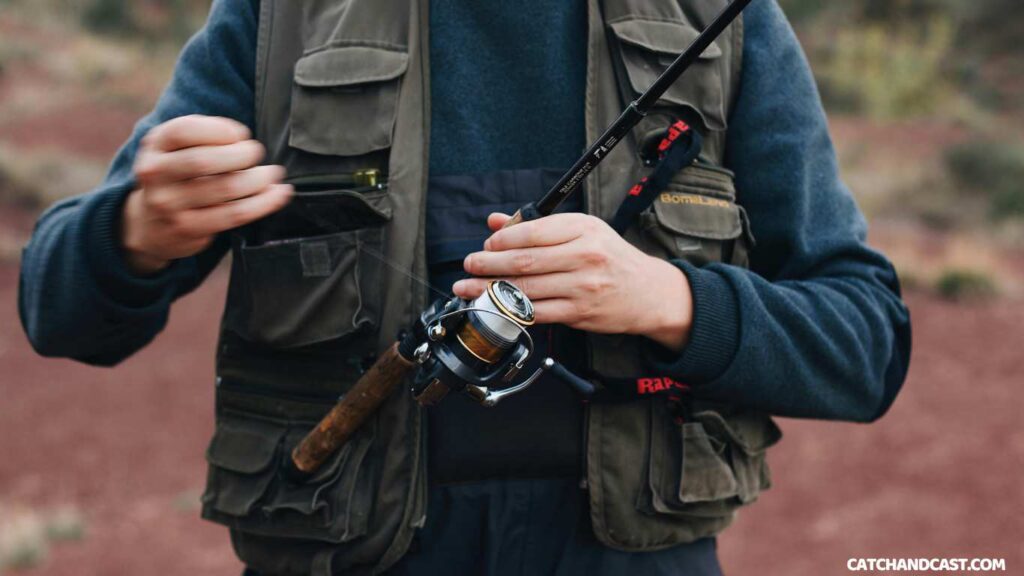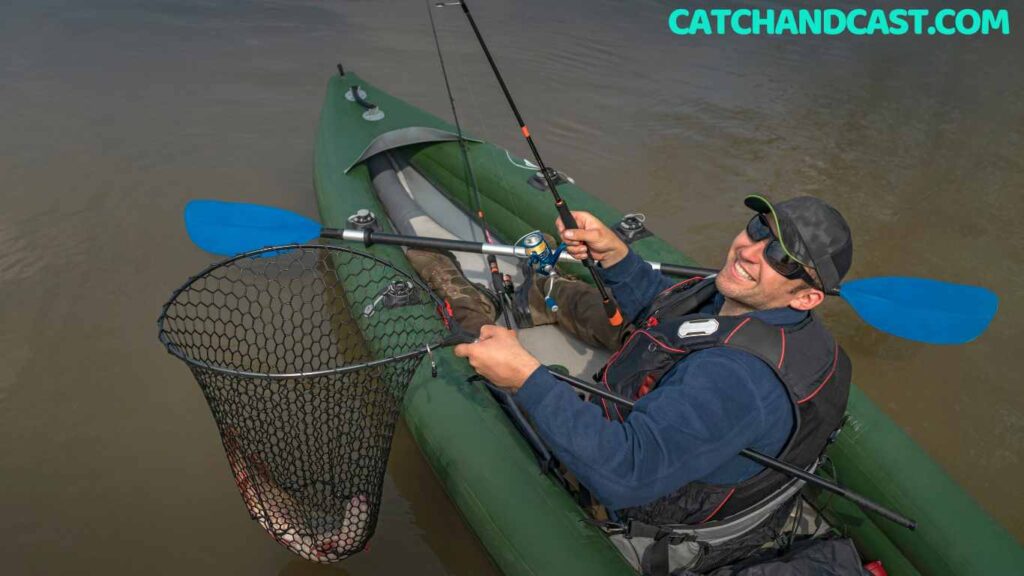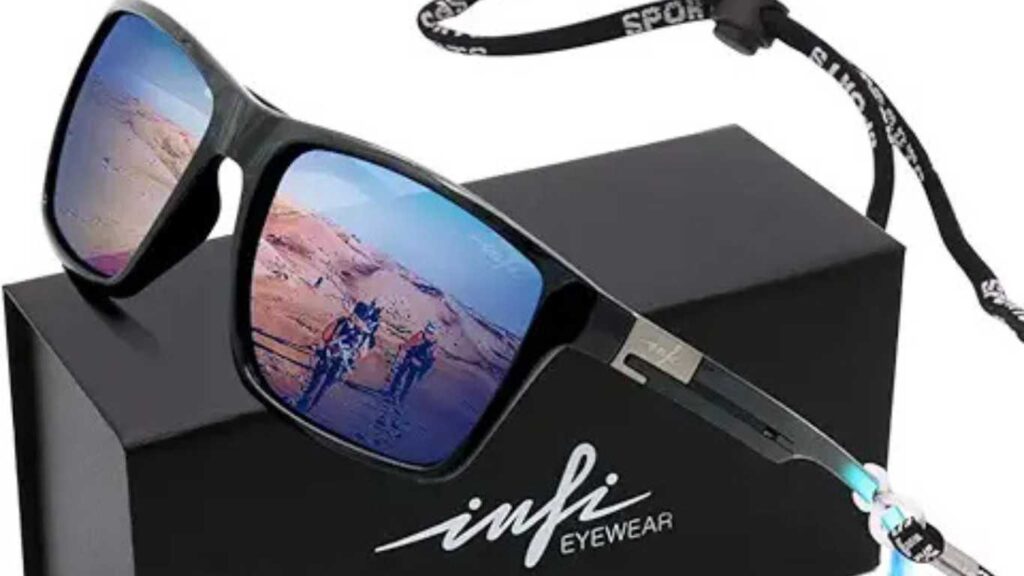So you are inspired by the challenging and fun nature of fly fishing and have finally made up your mind to do it. But here is the catch, you are not very familiar with the intricacies of fly fishing line setup and are looking for a step-by-step guide to set up your rig. Setting up a rig for fly fishing is not as hard as it sounds and this article will clear up all your doubts and will explain all the crazy terms that you come across while reading about fly fishing. In this guide, you will come to know about the selection of fly rod, and fly reel and how to match the perfect line. So let’s dive in to unlock the door to fly fishing.
Selection of the equipment
For a working fly fishing line setup you will need all the fly fishing-specific equipment as no other rod and reel will do the job for fly fishing, or should I say, the type of fishing with any other rod, reel, and line won’t be referred to as FLY FISHING anymore! There is more to it than just fly rod, reel, and line, you will have to select your gear by its weight, size and material. Here is all the equipment you will need for a complete fly fishing line setup
- Fly fishing rod and reel
- Fly fishing line
- Fly line backing
- Fly fishing leader
- Tippet
- Flies
- Combination clipper with nail knot tool
Selecting a fly fishing rod
Selecting a fly fishing rod has many factors to it. A fly rod is different from other rods as it is thinner and lighter. It is also much more flexible than any other rods which are heavier, thicker and stiff.
Fly rod length
A fly fishing rod is longer than other rods. This helps the angler to cover a large water distance as the line is weighted. The rod length is determined mainly by the size of rivers and streams in which you are about to fly fish. For a general idea, you can opt for a 7 to 9-foot rod for smaller streams and a 10 to 12-foot rod for larger water bodies.
Fly rod weight
The term “rod weight” might confuse you with the literal weight of the rod, however, that is not the case. Rod weight refers to the weight of the line for which the specific rod is designed. The rod weight depends on the type of fish you are going after. Typically a lighter rod is used for smaller fish and a heavier rod is used for larger fish. Above all, you must opt for a rod that feels fine in your hands and is not too heavy or too light. Here is an idea of what weight of rod is used for what type of fish.
| Rod size | Fish type |
| 2-4 weight | Small trout and panfish |
| 5-6 weight | Average trout size |
| 6-8 weight | Bass and steelhead |
| 9-10 weight | Salmon, pike and large trout |
| 10 + weight | Saltwater species like tarpon |
Fly rod action
When buying a rod you will see a label that mentions “action”. Fly rod action is a term that specifies the flex character of the rod. A “fast-action” rod is flexible only at its tip and is stiff at the middle and bottom parts. A “medium-action” rod has a flexible tip along with a flexible middle portion. A “slow-action” fly rod flexes down to its grip. A 4-6 weight fly rod with a medium/fast-action is recommended for a beginner. This is easy and will do a perfectly fine job while casting.
Selecting a fly fishing reel
A fly fishing reel comes with information about which fly rod it goes with. For instance, a ¾ fly reel will work for either a 3-weight rod or a 4-weight rod. Selecting a fly reel is as important as selecting a fly rod and following are the factors to keep in mind while searching for the best fly reel.
Drag system
The drag system works by fitting friction plates inside the reel to stop the line. When a big fish or a strong fighter pulls the line hard enough that the drag force is overcome, the reel rotates backwards and lets the line come out. This system will save your line from breaking or snapping. A rod of weight 0-4 has nothing much to do with the drag force as you pull the fish by stripping action.
A rod that weighs above 4 has greater concern with the drag system and the importance of it increases with the weight. Hence it is important to test the smoothness of the drag system before buying a fly reel. When a fish is hooked, you will want the fish on the reel. This means that the extra fly line is reeled in and tightened between the fly reel and the fish. This way the drag system exerts pressure on the fish.
Reel quality
The quality of the reel is crucial before buying it. You will want a reel that is strong enough to meet your fly fishing requirements. Any reel that is designed for a rod that weighs 6 and above should be machined aluminum with an anodized finish and sealed drag. For freshwater fishing, you don’t need to worry about corrosion, but for saltwater, you must get a reel that is waterproof, corrosion-resistant and strong enough to survive the wear and tear.
Tips for buying a fly reel
It is advised to take along your fly rod while shopping for a fly reel. You must check for the balance of the reel on the rod. If the setup balances perfectly in your hand when you hold it lightly, you know that it is the right reel.
Selection of fly fishing line

The Fly line is a weighted line and a big crit of your fly fishing gear and setup. Selection of the perfect line to go with the rod and reel is highly crucial as this might make or break your setup. It would be better if all the rods came with the matched fly line. A fly rod combo is a beginner-friendly option as it reduces the stress that comes with selecting the line. In a fly rod combo, the rod comes with a matched reel and line.
A fly line one size higher than the weight of the fly rod is great to start with. For example, if you are using a 6wt fast action rod then a 7-weight forward line will work the best for you. Nonetheless, your experience will make you a pro at selecting the perfect line. The secret lies in the technique of your castings.
Tips for buying a fly
Do not just settle for the information mentioned on the product or what the shopkeeper tells you, you must try different fly lines and check what works best for you. No! You don’t need to buy a couple of different lines, you can just bring your rod with you and test the lines before buying. Try casting the line before buying and make a conclusion based on your preferences and fishing requirements. Here is a pro tip, top quality lines have features like improved textures and coatings to enhance your castings, and they do work better than the ones that lack such qualities. However, they are on the pricier side.
Here is the basic knowledge that you must have about fly lines :
Types of fly lines
There are three main types of fly lines with other categories being the sub-classifications. The main three types of fly lines are as follows
Floating fly line
Just as the name suggests a floating fly line “floats” on the surface of the water. The line does not sink which makes it suitable for surface fishing. The benefit that comes with a floating line is that the surface tension is greatly reduced as you don’t need to pull the sinking line nor does the line below the water get tangled. This type allows you to fish with dry flies, nymphs and streamers.
Sinking fly line
The mystery is solved by the name itself. The sinking fly line sinks to the bottom of the water body. The rate at which the line sinks is different. An intermediate sinking line will sink with an average speed of 1.5 to 2.0 ips (2-4’). The length of a sinking line is also adjustable and is based on what level of water the fish are cruising. Surface tension is increased in this type as the whole line is under the water.
Sink-tip fly line
Sink-tip fly line is a combination of the floating line and sinking line. In this type, the tip, usually 8’ to 16’ feet, is sinking in the water and the rest of the line is floating. This type is useful when you are fishing in rivers, lakes and streams. They are beneficial while casting the line.
Sub-types of fly lines
These types are mainly differentiated by the taper of the line. A line taper measures how the weight/thickness of the line is spread over its entire length. Different conditions decide the distribution of weight.
Weight-forward fly line
In a weight-forward fly line the entire weight is transferred to the tip of the line. This type is used in 85% of the fishing.
Double taper
In double taper, the weight is in the center of the line. This helps in delicate presentations over short distances.
Fly fishing line setup
Here is a step-by-step guide to assembling your fly fishing line setup. Now that you are familiar with the selection of the right equipment, you are ready to learn about setting up your rig. Before actually assembling your equipment for fly fishing line setup you must figure out if you are a right-handed caster or a left-handed caster. If you are a right-handed caster then you will reel with your left hand and vice versa.
Step 1: Assembly of the fly rod
Some rods come with alignment dots, which makes the assembly of the rod faster and easier. You have to insert and twist the fly rod pieces at the same time. Start with putting the sections together a quarter turn out of the alignment dots and twist. The connection between the parts of the rod is called a ferrule. The assemblage of the rod takes you to the next step
Step 2: Attach the fly reel to the rod
Under the cork of the rod there is a cut out and this is called the stationary hood. Insert the foot of the reel under this hood and then spin the moving hood closer. Tighten it up so that the reel is secured in place. Give a little spin to the crank to check drag direction and reeling. If the spool spins counter-clockwise easily, it is the correct setup for a right-handed caster.
Step 3: Attach backing to the reel
Backing is necessary to fill up the extra space and increase the arbor size. This in turn will bring in more amount of line with every crank. Attaching the backing to the reel is a relatively easy process. You just need to bring one end of the backing around the arbor of the reel and tie a uni knot, typically called an arbor knot. This is how you tie an arbor knot: Bring the smaller end over the two pieces of the backing, and a loop will be created. It is an overhand knot five times, which means you take the tag end through that loop and wrap it around five times.
After tying the arbor knot, you have to pull on the standing end and tighten that up. Clip off that tag end and secure the knot in place. Now you can just load the backing onto the reel by winding. You can do it by yourself or get help from another person to just hold the backing to speed up the process. Make sure that the backing is going on there nicely and evenly.
How much backing do you need?
You must match the amount of backing to the size of your line, here is a general idea of how much backing you might need on the reel
| Amount of backing | Reel weight |
| 0 to 25 yards | 1 to 2-weight reel |
| 25 to 50 yards | 3 to 5-weight reel |
| 50 to 100 yards | 5 to 7-weight reel |
| 100-150 and more | 7+ weight reel |
Step 4: Attach the fly line with the backing
Now some lines come with a label saying “This end to the reel”, this might help you figure out the right side to go with the reel. If your fly line has a loop on its end, you can attach it to the baking by tying a double surgeon knot loop and making a loop-to-loop connection. If it does not come with the loop then you will have to tie a nail knot.
- Double surgeon loop: make a bite at the end of the line and tie an overhand knot. Pass the bite through it one more time to tie a double overhand knot and adjust the loop size. Lubricate the knot and pull it tightly to make it strong and secure. Clip off the tag end and you are ready with a double surgeon’s loop knot.
- Nail knot: hold a nail knot tool with one hand and pass one end through the groove. Wrap the tag end around the tool and make about 5-7 turns towards your thumb. You can use your index finger to hold the loops in place. After that, you have to pass the tag end through those loops and out through the tip. Insert the line through the loops in the opposite direction (from the tip towards the thumb) and trim the excess.
Now reel the fly line on by simply winding. And let me repeat: make sure the line goes on there nice and even. One more thing that you should know is that when the line is fully loaded on the reel, it should not touch the body of the reel. If it does, then remove the line and take off some backing. This is a trial and error learning, you will eventually get better through practice.
Step 5: Attach the leader and tippet
A leader is needed to connect the fly line to the fly. Most of the leaders these days come with a loop at the end. This makes the attachment of the leader to the line easier. You just need to make loop-to-loop connections and you will be good to go. Otherwise, you can tie a blood knot or a nail knot.
The size of the leader mainly ranges from 6 to 12 feet. The correct size is selected based on the conditions, however, a 9-foot leader is a great starting point. Now you don’t need a tippet as the last 10 to 12 inches of the leader work as a tippet, but if you change your fly 3-4 times then you will use up that tippet. In that case, it is better to have a tippet.
Step 6: Tying a fly onto the tippet
Fly is the weightless part of your fly fishing setup. Flies come in different shapes and sizes for different types of fish.Lure is tied at the end of the tippet and this can be done by different kinds of knots. The most common one is the clinch knot.
Clinch knot: pass 3 to 4 inches of the tip through the eye of the hook and wrap the tag end around the main line about 5-7 times. Then pass the tag end through the loop created near the hook. Lubricate the knot and pull the hook to draw down the knot. Trim the excess off and here you go, your hook is tied to the line with a clinch knot
This is how you can start off with your first fly.
Conclusion
Summing up, the fly fishing line setup plays a pivotal role in the success and enjoyment of the fly fishing game. We understood the technicalities and intricacies of size matching and setting up the right gear for stealth and presentation. As a whole, balancing the right rod, reel and line is not just a necessity but an artistic dance that connects you to life underwater.


